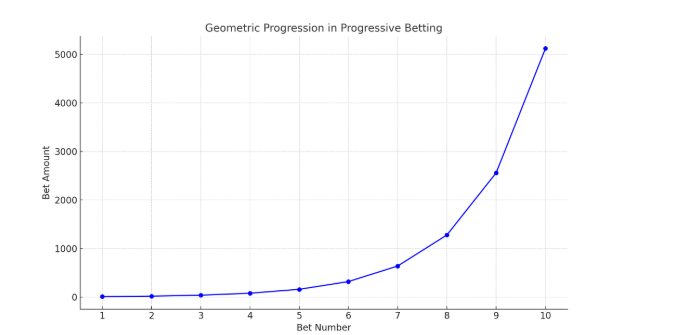What Is Progressive Betting? Can It Be Used In Sports Betting
Sports bettors are constantly researching the most ideal strategies to beat the house. If you have been in these streets for long, you already know Progressive Betting is quite popular! In case you already know about this one, you might want to leverage other strategies and offers.
Then Betika’s offer, in which they award a 15M KES jackpot for correctly picking 15 match outcomes, might sound interesting! Since that streak is not quite easy to achieve even if you have luck with long tickets, maybe a good idea is to try leveraging the Betika jackpot predictions, where they use 4 strongest AIs(ChatGPT, Gemini, Perplexity, and Grok) to work out the most probable outcomes for selected matches.

Below, we’ll continue with our main topic for this read, so grab a coffee or whatever drives your grind because in this article, we will unpack all that you have unknown with the Progressive Betting concept.
What Is Progressive Betting?
This is a strategy where you adapt or adjust the size of your wagers by taking into account the outcomes of previous bets; as such, you can increase or decrease your bet sizes depending on how past bets have gone. The logic behind progressive betting is easy. Adjust the size of your bet after a win or loss, the goal is to maximize profits or recover losses in successive wagering attempts.
Historically, Progressive Betting was popular among casino table game gamblers, precisely Roulette. However, its applicability in the sports betting markets has been widely embraced over the years, It utilises statistical and mathematical models to give an idea of the size of the amount you ought to stake in successive bets.
Types Of Progressive Betting You Can Use
There are two broad categories under which Progressive Betting strategies fall: these include Positive and Negative progressions. Let’s look into them
- Positive Progressive Betting System. This system proposes that you should increase your stake after a win and reduce it after a loss. The idea is to maximize profits while minimizing losses. The Paroli system is an example. You start your stakes with a base unit, which you must double in the next wager if you win. Repeat your doubling for three sets and reset to base level. The Fibonacci system is another example. You follow the Fibonacci system, but you should progress only after a win. For beginners, the Fibonacci sequence refers to a series of numbers in which each number is the sum of two preceding numbers. e.g 1, 1, 2, 3, 5, 8, 13, 21, 34…

- Negative Progressive Betting: Bettors should increase their stakes after a loss to recover the lost amount with a single win. The system is relatively riskier and may require a large amount of bankroll to take you back to the original stake after a loss. The martingale system is a perfect example; Martingale’s system proposes that you should double your stake after a loss.
Progressive Betting Systems In Nutshell
Progressive Betting systems offer bettors a structured approach to their stakes. Even so, they are not perfect and don’t guarantee profits, although they increase your chances of edging out the house. Overall, successful betting is a combination of such systems and other factors, including value betting and effective bankroll management.
